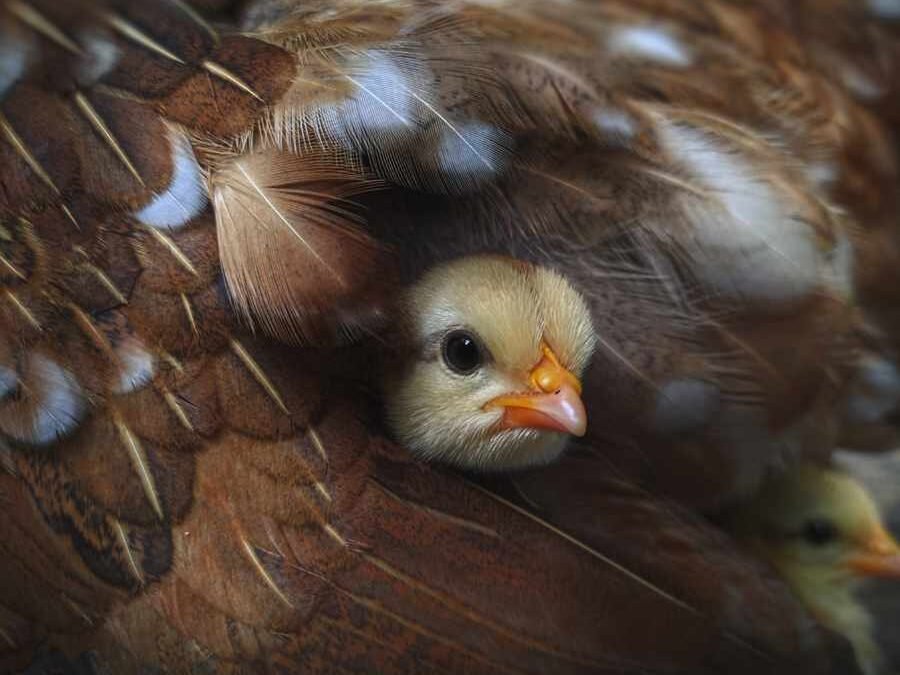Every spring, eggs are everywhere. Hard-boiled, dyed, chocolate, deviled, hidden in the grass, nestled in baskets, stacked in grocery stores. We paint them. We eat them. We hide them so kids can find them. We celebrate them. It’s cute. It’s festive. It’s… honestly, a little nauseating sometimes.
So — why eggs?
You might say, “Well, duh — they symbolize life.”
Sure. But so do flowers blooming, seeds sprouting, buds unfurling on trees. Why don’t we decorate those?
Why not create a springtime tradition like a “planting tree” for Easter — like a seasonal cousin to the Christmas tree?
Why are we so obsessed with eggs?
Lent, Chickens, and the Great Egg Feast
Throughout history, eggs have symbolized rebirth, fertility, and new beginnings.
Ancient Persians painted eggs for Nowruz. Slavic cultures made ornate pisanki. Christians adopted the egg as a symbol of the resurrection — a hard shell broken open like the tomb.
But here’s the twist (and a shocker for many): In nature, eggs are seasonal.
Wild birds only lay during certain times of year, and wild chickens, like the red junglefowl, lay between 10 and 15 eggs per year. This is significantly lower than modern egg-laying hens, which can lay hundreds of eggs annually. Even early domesticated chickens laid 60–100 eggs a year at most — not 300 like today’s hens.
So, back to Easter. Back then, people ate fewer eggs, and only when hens were naturally laying.
Then came Lent — the 40 days before Easter when Christians traditionally gave up rich foods, including meat, dairy, and yes, eggs.
But chickens didn’t stop laying.
So people preserved the extra eggs — by boiling or storing them in limewater — until Easter. When the fast ended, they feasted.
That’s how eggs became a traditional Easter food — not because of divine symbolism, but because of biology and timing.
From Jungle Birds to Billions Squished in Tiny Cages
It all started with wild junglefowl in Asia — I was lucky enough to spot some in Sri Lanka’s national parks, pecking around and living freely among other animals, including peacocks, storks, toucans, wild buffalo, and elephants.
Those birds still roam free. But most of their descendants don’t.
Today, billions of chickens are trapped in cages, bred and confined to lay egg after egg until their bodies give out. Then they’re discarded like trash.
Hardly a symbol of life.
Rather, a proof of industrialized suffering.
Eggs for Breakfast? That’s Just PR
You might think eating eggs for breakfast is timeless. It’s not.
For most of history, people ate plant-based breakfasts — like porridge, fruit, or leftovers.
“Eggs and bacon” only became the classic American breakfast in the 1920s, thanks to a PR stunt.
Literally.
The pork industry hired Edward Bernays, the “father of public relations,” to boost bacon sales. He surveyed doctors, spun the results, and declared that a “hearty breakfast” (eggs + bacon, of course) was healthiest.
The egg industry joined in. To keep profits up, they crammed hens into cages, bred them to lay more, and spent millions marketing eggs as essential. They even paid doctors and influencers to promote them.
Want proof that the egg industry isn’t playing fair?
Look up the story of Just Mayo, a popular vegan mayo.
It was so threatening to “Big Egg” that the American Egg Board — a government-funded group — tried to destroy it.
(Internal emails (released via FOIA) showed executives asking:
“Can we kill Just Mayo?”)
They paid influencers to undermine it. Pressured Whole Foods to drop it. Lobbied the FDA to redefine what “mayo” even means.
Meanwhile, they kept spending big money pushing the idea that eggs are essential, natural, and wholesome.
But Hens “Give Us” Eggs. Eggs Are Natural and Eating Them is Normal
Let’s be clear: There is nothing natural about this process. It’s not normal to take a sentient creature, capable of feeling, bonding, exploring, and caring for her young — and lock her in a cage for her entire life, just so we can enjoy cheap eggs every morning.
The idea of confining hens in cages didn’t come from observing nature — it came from industry logic: how to get the most output in the smallest space, at the lowest cost.
After World War II, agriculture changed rapidly. Governments and corporations pushed for “modernization” — which really meant industrialization. Bigger yields, faster growth, less labor. Farming was reshaped to behave like a factory.
So instead of asking, What do chickens need to thrive?, the question became:
How can we get the most eggs per square foot?
Battery cages — small metal enclosures stacked in tiers — were introduced in the 1930s and became the dominant method by the 1950s. Each hen was given a space smaller than a sheet of paper. She couldn’t stretch her wings, walk, or nest. Her natural behaviors — dust bathing, perching, foraging — were completely denied.
It was hailed as efficient. But it was — and still is — entirely unnatural.
For most of human history, chickens lived outdoors. They were part of the household or the farm, scratching in the dirt, roosting in trees, laying eggs a few times a month. The shift to cages wasn’t based on new science or animal welfare — it was based on economics and mechanized thinking. The hen was no longer seen as a bird, but as an egg-producing unit.
And once that system was profitable, it became the norm — even if it meant billions of animals living in misery, stripped of everything that makes life worth living.
Now, people often compare egg-laying to something simple and harmless — like ovulating or shedding a skin cell. But in reality, laying an egg is much more like giving birth. It’s a physically demanding, energy-intensive process. The hen’s body forms the yolk, adds layers of albumen (the white), and builds a hard shell — all in just about 24 hours. Then she pushes it out through her cloaca — an opening that also serves for urination, defecation, and reproduction. It’s not a casual event. And now imagine being forced to do that every single day, for 300 days a year, in a cramped wire cage without sunlight or rest. Most hens are completely depleted within a year or two, suffering from brittle bones, prolapsed vents, and exhaustion.
Saying “it’s just an egg” ignores the biological and emotional cost. We need to stop pretending it’s no big deal.
Eggs = Life? Oh, Please.
It’s hard to swallow.
We say eggs symbolize life. But today, they more accurately represent:
- Suffering, behind closed doors.
- Exploitation, normalized by culture.
- A broken system that sees animals as machines.
Can we change that? Maybe not overnight.
(Probably not in my lifetime, which makes me sad.)
But we can change our own choices. Even if one person doesn’t mean much. One plus one plus millions of ones matter.
A Kinder Easter (and Every Day Breakfast) Is Possible
Here is a radical idea. And a brave one, too.
(Defying social norms requires courage and confidence.)
This Easter, let’s do things differently.
Let’s paint wooden eggs or make vegan chocolate ones.
Let’s skip the egg-galore madness and fill our tables with vibrant, seasonal, plant-powered foods.
Let’s make this season of renewal truly about rebirth — for the planet, for animals, and for ourselves.
Because honoring life means more than just saying it — it means living it.


